Marketing Cloud takes 15 minutes to sync Synchronised Data Extension with CRM and a further 10 minutes will be required to update the local data extension. This solution guide can help users to send a ‘Welcome Email’ immediately after the Lead or Contact record is generated in the CRM.
As the sync takes more than 20 minutes, the ‘Privacy Site URL’ field value on the contact/lead record will be blank while it is being populated to the marketing cloud. Hence users need to embed the Privacy Site’s ‘URL’ i.e “User-Friendly Preview URL” field of the Privacy Site object (Cloud Compliance’s Custom Object) in the email template of ‘Welcome Email’. So that via Welcome email, Leads/Contacts will be redirected to the user’s Privacy Site where they can enter their email id and get a verified email by which they can manage their consents.
Triggered Sends can send Marketing Cloud emails to Leads/Contacts immediately when they are created in CRM. CRM data doesn’t need to be synced to Marketing Cloud for sending emails.
Refer to the Salesforce Help article if required.
https://help.salesforce.com/articleView?id=mc_co_understand_triggered_sends.htm&type=5
Prerequisites In Salesforce (CRM)
A Privacy Site should be created in CRM with Manage Consent Tab (having a consent matrix).
- Consent Management
- Marketing integration guide
- Refer to the below link to know about Marketing Cloud & Salesforce connection in detail
https://docs.Marketing Cloud.com/display/public/DOCS/Salesforce+Sync
Prerequisites in Marketing Cloud
- Note: This feature will only work for Marketing Cloud Connect users and may require Administrator permissions in the Sales/Service Cloud.
- CRM should be connected to Marketing Cloud. Kindly refer to the below trailhead
https://trailhead.salesforce.com/en/content/learn/modules/marketing-cloud-connect
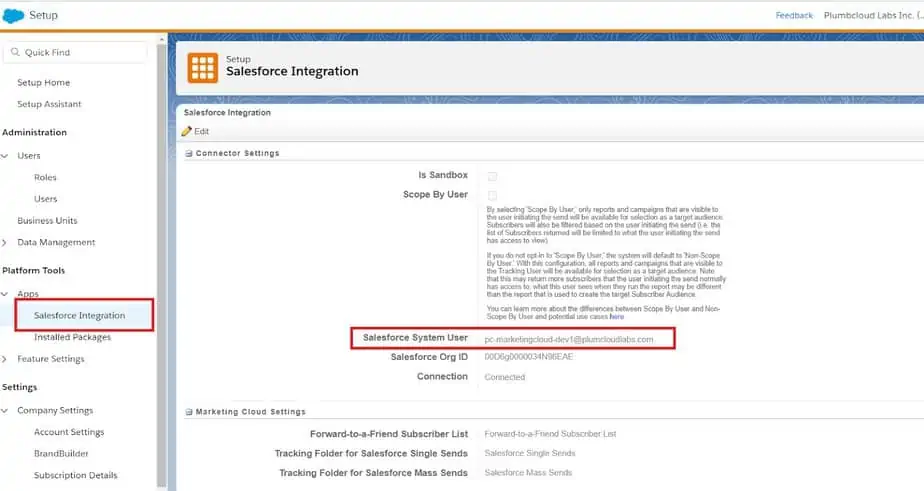
Solution Steps
1. Users must go to the Privacy Site record where the consent matrix is set up and copy the ‘User-Friendly Preview Url’ to embed in the Marketing Cloud email template ‘ Welcome Email’. So that the Lead/Contact is redirected to enter their email id to manage his consent.
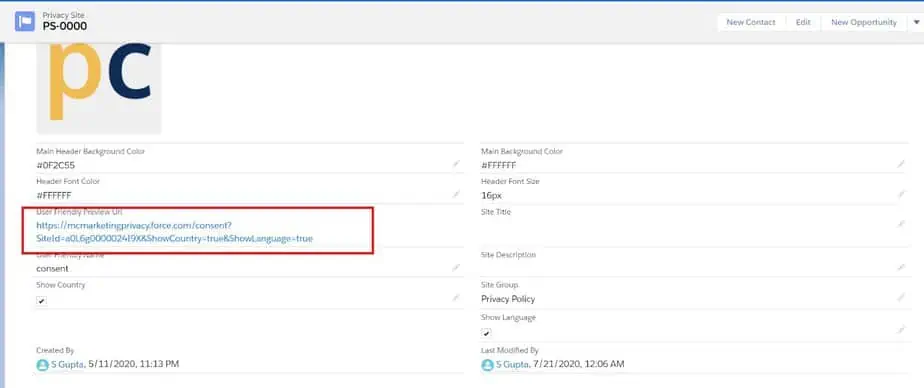
2. To send an email to the Leads/Contacts first user needs to create an email template and the user needs to make sure to embed the above ‘User-Friendly Preview Url’ in the footer section.
For eg. For this case, we have created a ’Welcome email’ template when Lead/Contact is created in CRM.
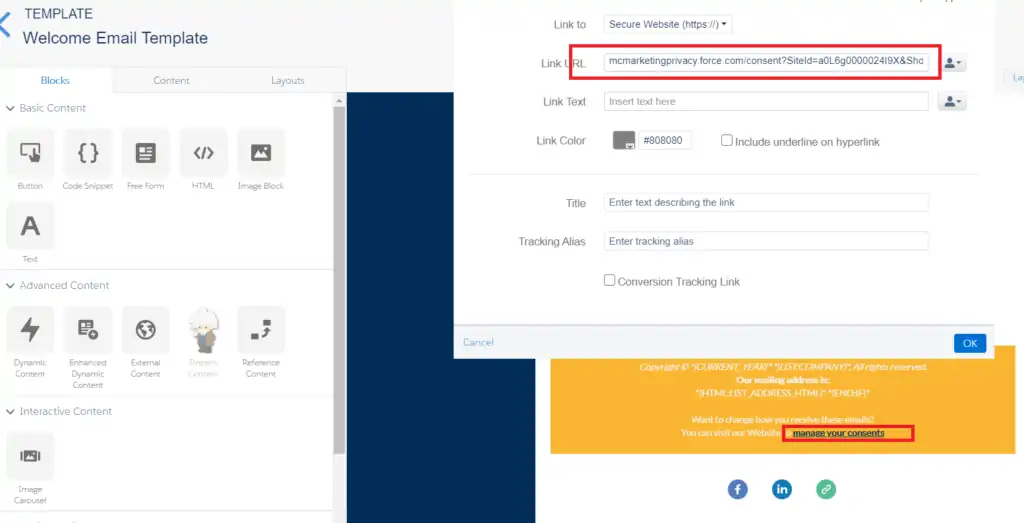
3. In CRM, switch to the Salesforce Classic UI, navigate to the Marketing Cloud tab, and click on Configure Marketing Cloud Connector. Scroll down to Triggered Sends and in the Enabled Object section, add Contact to the list
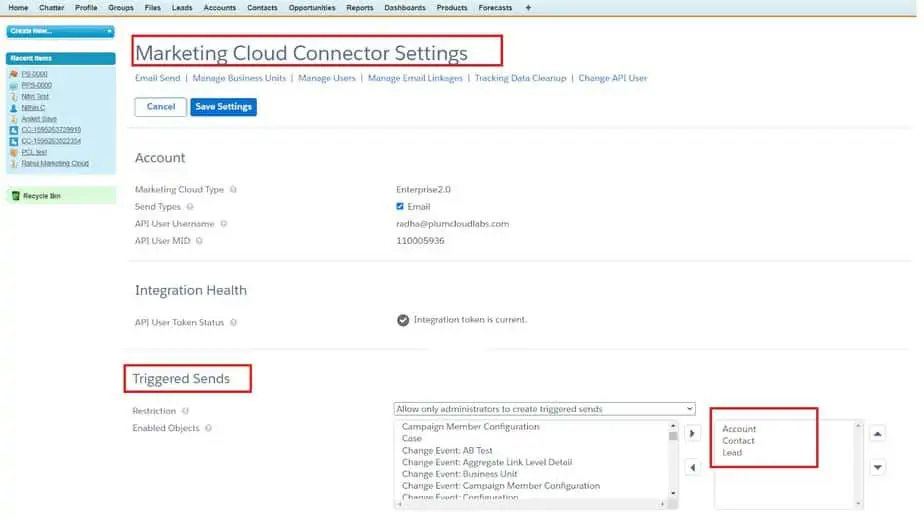
4. After you save the settings, once again navigate to the Marketing Cloud tab and click on Triggered Sends. In the Triggered Sends Management section, click on New. Enter a Name for your triggered send and choose Object ‘Contact’ to use with the Triggered Sends. Next, choose to Trigger send when a new record is created. The user also has to select an email template ‘ Welcome Email’.
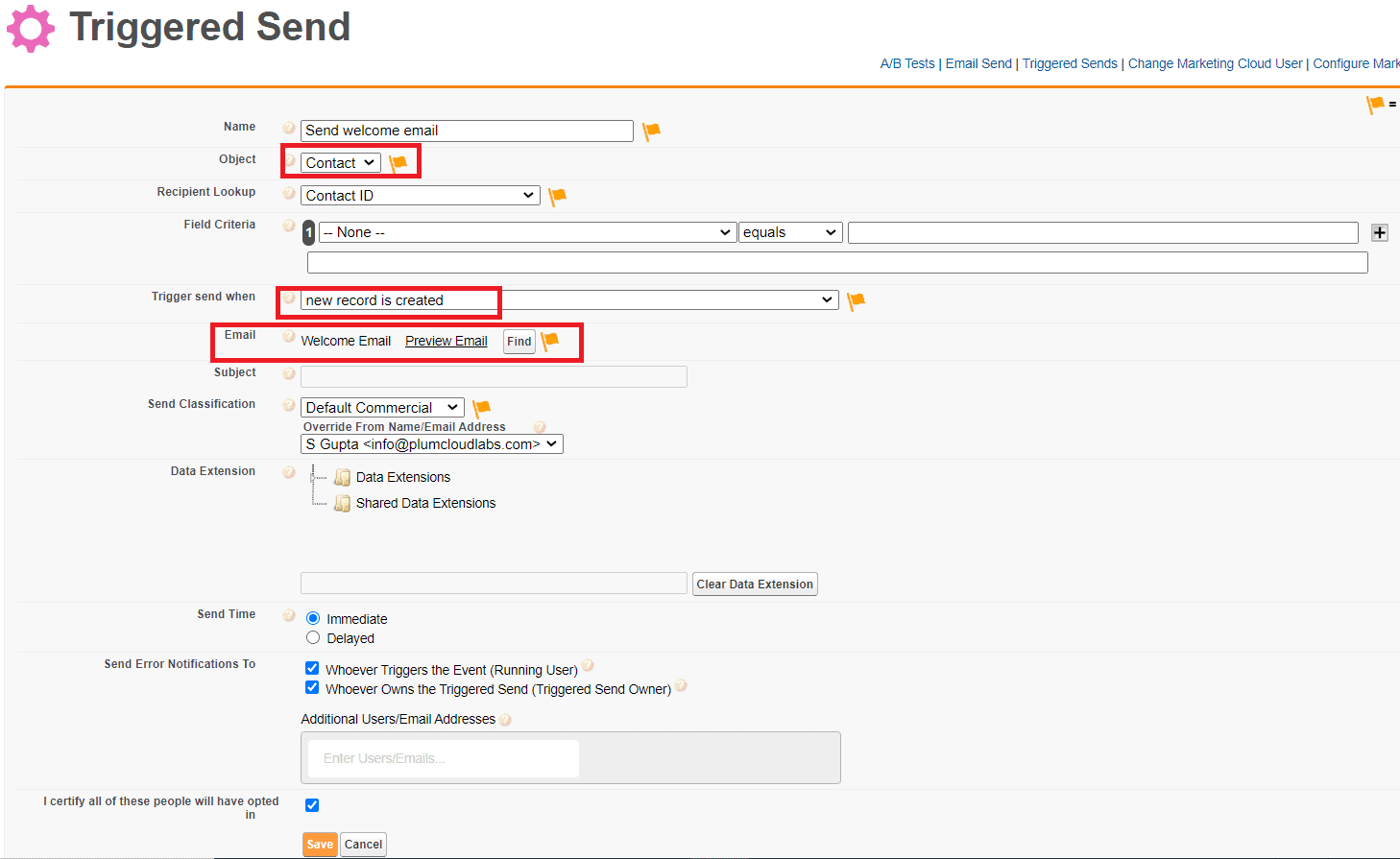
5. Before Activating the Triggered Send, users will need to create an Apex Trigger on the Contact object. In CRM go to Setup. Under Build, click Customize and choose Contact > Triggers. Create the Trigger as follows. Now the user can Activate the Triggered Send.
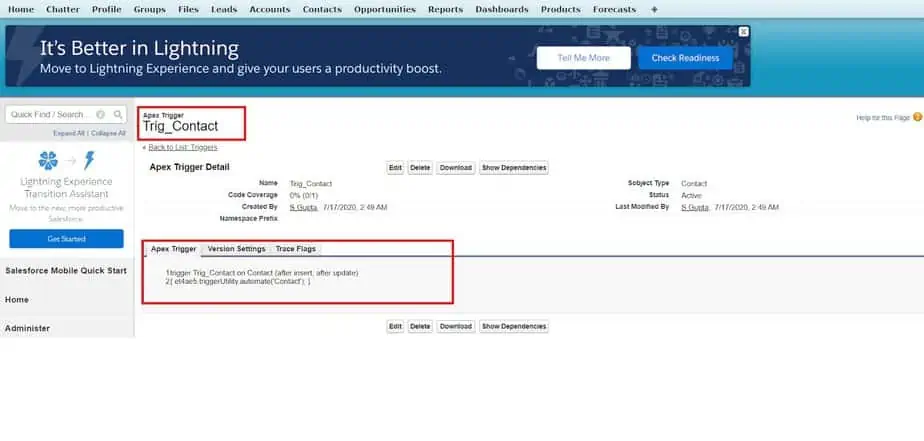
6. Now if any Contact record is created with matching criteria (if specified in the Journey Builder) then the email which is basically a ’Welcome Email’ is fired from Marketing Cloud. The contact receives an email and to manage the consents they have to click the Manage consent link in the footer section of the email.
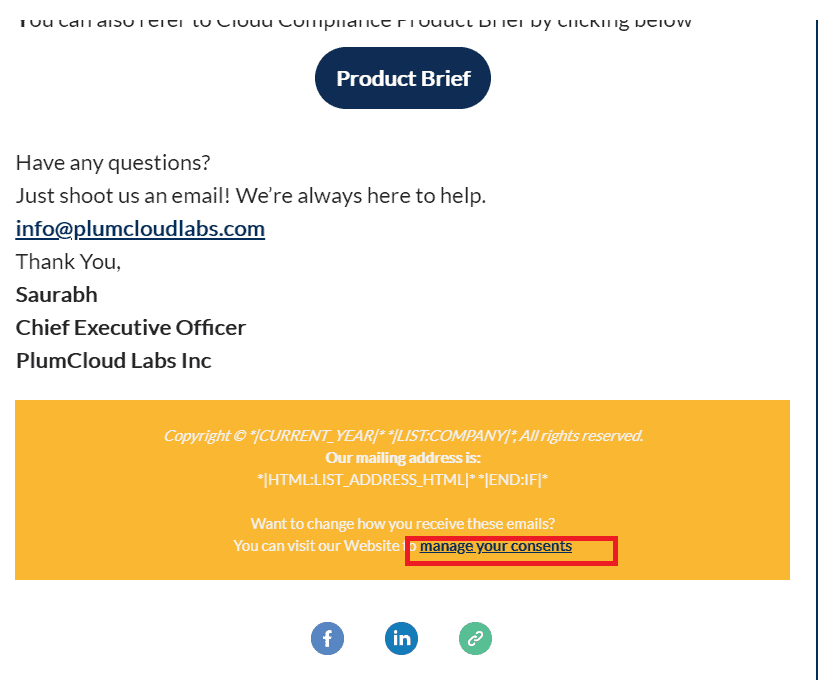
7. After clicking the link the contact is redirected to the Privacy Site where they can enter their email id and a verified email having a link to their ‘Self-service portal’ is sent.
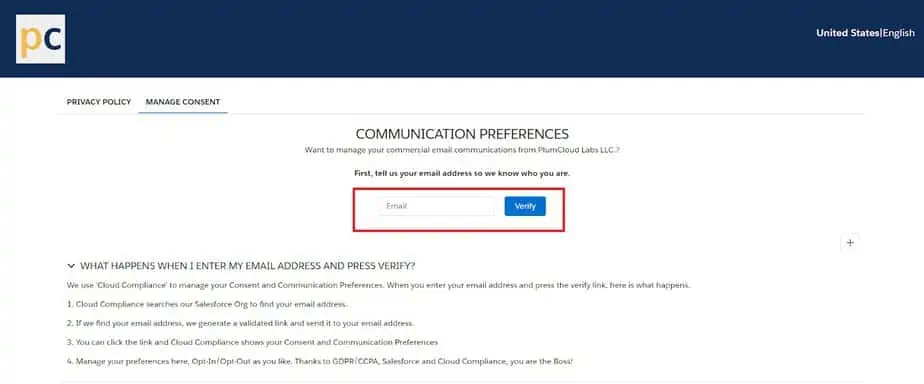
8. Once the verified Contact receives the email, the next thing that the contact needs to do is to click on the ‘Manage Consents’ button which will navigate to the Self-Service portal.

9. After clicking the ‘Manage Consents’ contact can now give their consents on the Self Service Portal as follows –
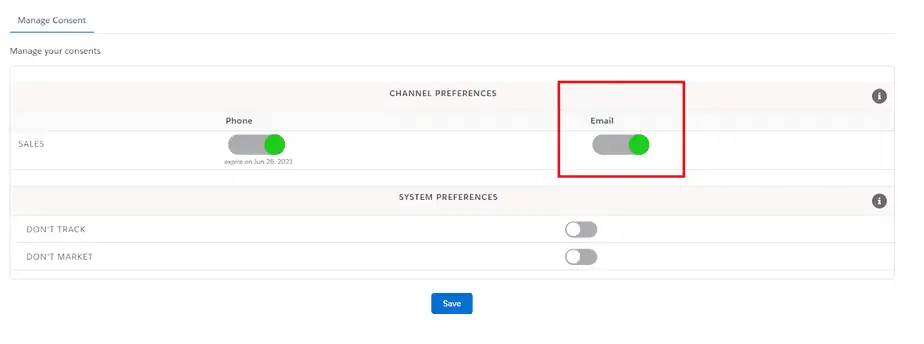
10. If new consent values are given then our product will be synced to Salesforce (CRM) in the background and will be reflected in the Consent matrix of the Salesforce (CRM).
Now if a user wants to send an email from ‘Salesforce Data’ only, then continue using Journey Builder by creating new Journeys.
But if a user wants to send an email and also maintain CRM’s updated data on a local data extension of Marketing Cloud then the user can continue from step no 5 of Marketing Cloud – Automation Studio.
